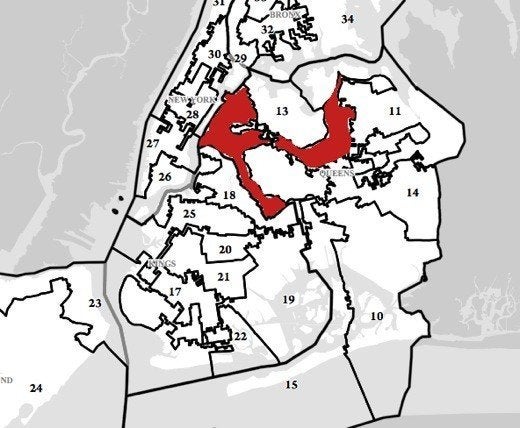
Having lived in New York and California, I am aware of the many differences that characterize the Empire and the Golden states. And with that understanding in mind I make the following suggestion:
Instead of congratulating themselves and trumpeting the passage of what they are calling an historic reform of New York's redistricting process, New Yorkers interested in redistricting reform should conduct an in-depth review of California's truly "independent" approach to redistricting.
The New York reform comes after a particularly contentious redistricting where "good government" groups have rightly decried the legislature's blatant gerrymander to protect incumbents. In fact, it has been so bad that the state's congressional districts are being drawn by a federal court.
Often when elected officials hail political reform it is a red flag to the public that they should take a closer look at the details. This is certainly the case when a comparison is made between the manner in which the California Citizens Redistricting Commission operated and what has been agreed to in New York.
As one of the 14 members of California's first-ever independent and non-partisan California Citizens Redistricting Commission, which this year successfully redrew district lines, I have gained an appreciation for some of the key ingredients that are important for true redistricting reform.
The most glaring problem with New York's so-called "independent redistricting commission" is that it isn't even close to being independent since the commission is appointed by legislative leaders. By giving the legislature the power to appoint the members of the commission you are at the outset creating an atmosphere that will ultimately be hostile to independence.
In California, the application and appointment process was an open one with over 30,000 individuals applying. The applicants, and their immediate family, needed to meet eligibility and strict conflict of interest rules for the prior decade. These conflicts included not having held or run for state or congressional office, been a state or federal lobbyist, worked as paid California legislative or congressional staff, served as an appointed or elected member of a political party central committee, or contributed $2,000 or more to any candidate for elective office in California in any year.
The conflicts of interests set forth in the New York proposal are far less restrictive and apply only to a three year window, not ten.
The independent California state auditor was responsible for processing the applications, winnowing the field by applying the conflicts of interest, collecting additional information and interviewing the applicants. The state auditor then randomly selects the first eight commissioners and those eight select the remaining six from the final applicant pool. The commission must consist of five members each of the two largest political parties and four members not associated with those two political parties.
In California the commission has the sole authority to adopt final maps by securing at least three yes votes from Republicans, three yes votes from Democrats, and three yes votes from those not affiliated with either party. The maps are then certified by the commission and are not subject to a vote of the legislature. If the commission is unable to reach the required number of yes votes then the California State Supreme Court will appoint special masters to draw the districts.
Of course, the public has the ability to file a complaint against the maps which is then reviewed by the California State Supreme Court. The three challenges filed with the Court were unanimously dismissed on 7-0 votes.
Conversely, any maps approved by the New York commission will then be sent to the legislature for a vote to approve or reject without amendments. If the legislature rejects the commission's maps the commission must submit an amended plan which is voted on by the legislature again without amendment. If the legislature decides to again reject the commission's plan each house of the legislature may then amend the plan which cannot affect more than 2% of the population of any district in the commission's plan.
The California Citizens Redistricting Commission was successful due to the open, non-partisan and non-political selection process. We were committed to making the new redistricting reforms work, to deliver fair and representative districts and in so doing help restore the public's broken confidence and trust in its government.
Based on the California experience, I believe the New York proposal is less likely to achieve a fair and representative redistricting. In its first attempt the Golden State's process, although not completely perfect, achieved a fair redistricting by improving on a flawed process. In my judgment that improved process is worth reviewing by New Yorkers who could then reinvent the process to meet the unique needs of the Empire State.